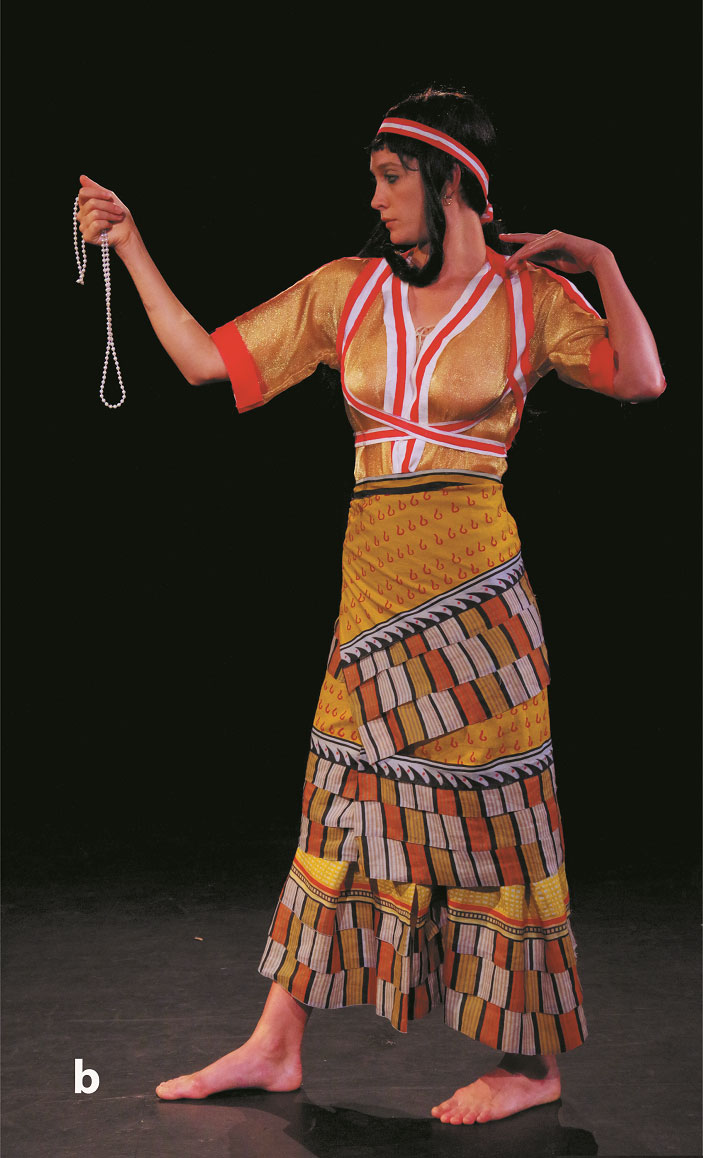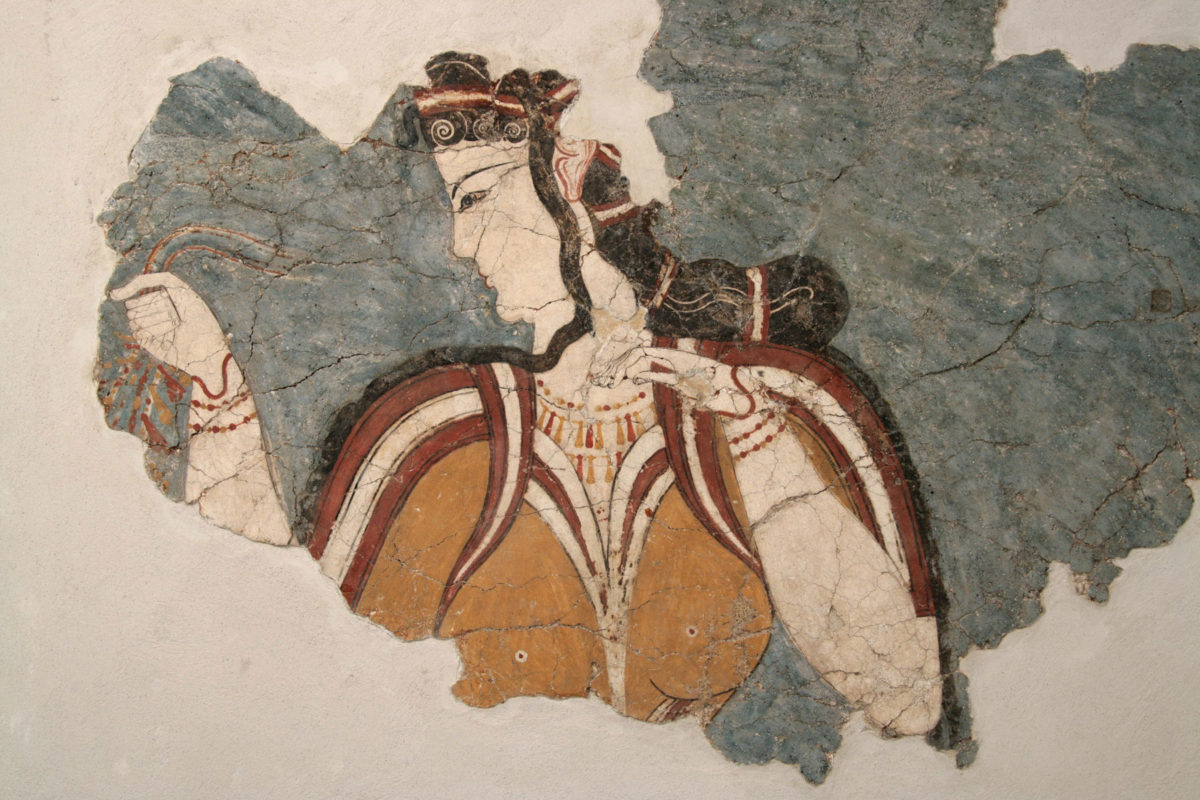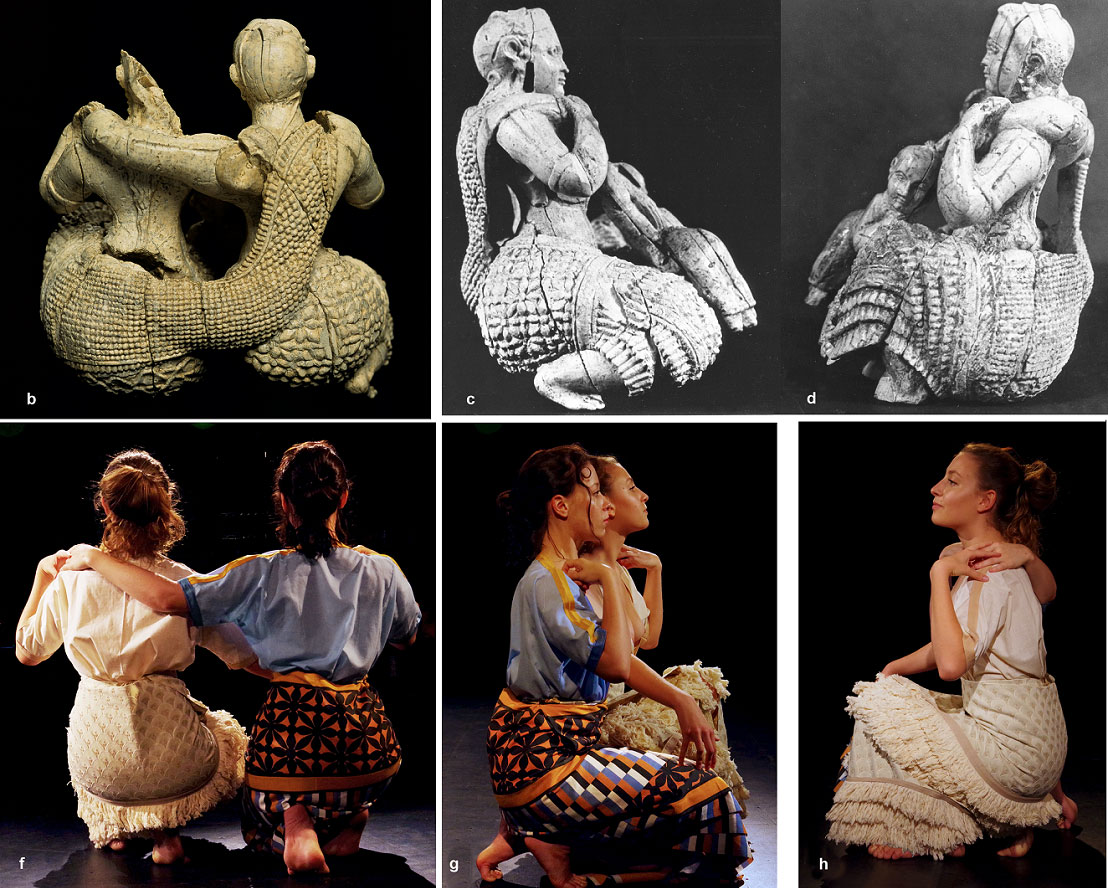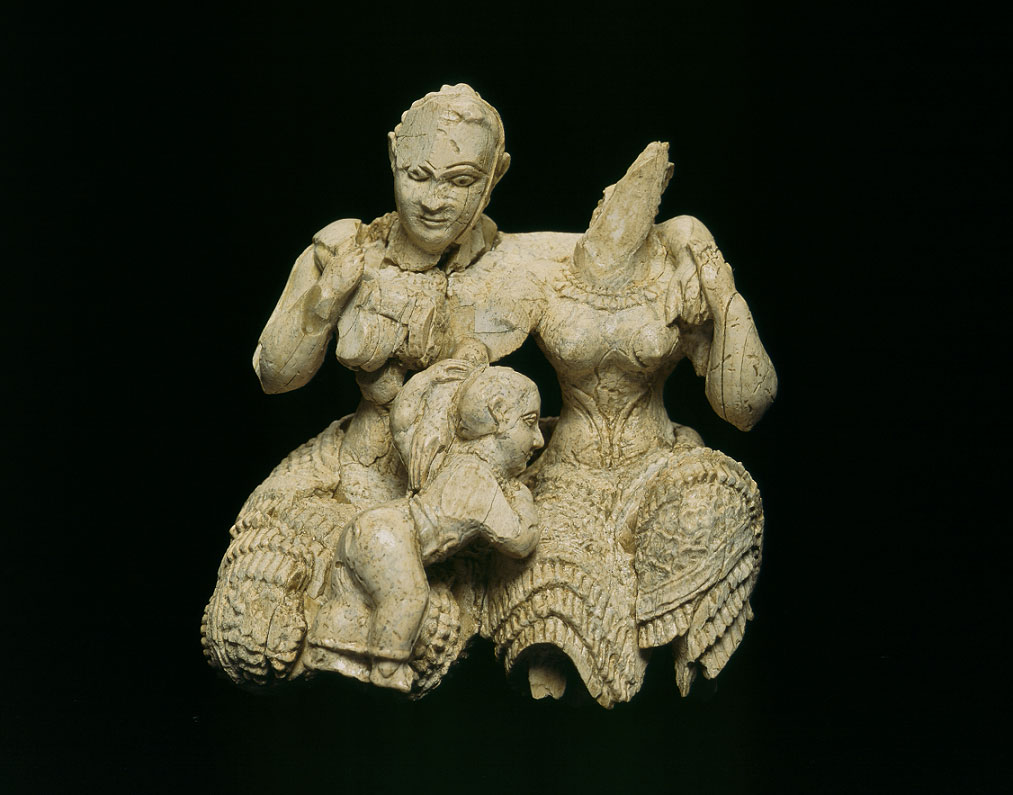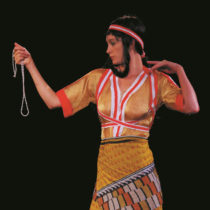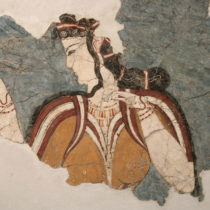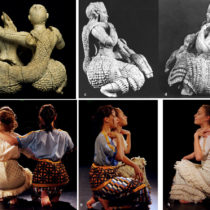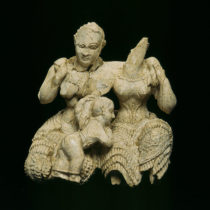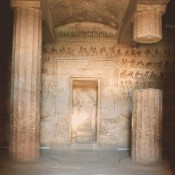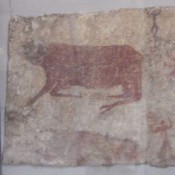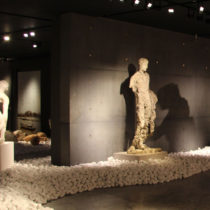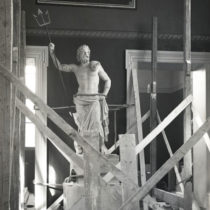The National Archaeological Museum is organizing activities in experimental archaeology as part of the new temporary exhibition entitled “The countless aspects of Beauty” offering visitors an opportunity to approach the aesthetics of the ancient world in a multi sensory manner.
From Tuesday June 26 to Sunday July 8 experimental reconstructions of Minoan and Mycenaean costume will be on display in the Museum’s exhibition areas. They have been created by the researcher archaeologist Dr Bernice Jones of the Institute of Fine Arts, New York University, who made detailed studies of their depiction in wall paintings and micro- sculptures as well as of contemporary dress from Egypt and the near east, the technology of weaving on a vertical loom and relevant recordings on tablets in Mycenaean Linear B script. For the first time, visitors to the National Archaeological Museum will have the opportunity to see and experience costumes as they might look, that are depicted in such emblematic antiquities of the Museum as the ivory sacred triad from Mycenae, the ivory female figurine from Prosymna and the famous Mycenaea.
Dr Bernice Jones will give a lecture in English about her experimental research on Wednesday June 27 at 18:00 in the amphitheatre of the National Archaeological Museum, while, in the Museum exhibition areas, presentations and demonstrations will be made in English of sections of each costume and also of the way they were reconstructed. These will take place on the following dates:
Tuesday June 26 at 16:00/ Thursday June 28 at 12:00/ Saturday June 30 at 12:00/Tuesday July 3 at 16:00/Thursday July 5 at 12:00 and Sunday July 8 at 12:00.
Phone bookings are required for attendance of the activity in experimental archaeology in the exhibition areas, at telephone numbers 213 2144856 and 213 2144858 and the purchasing of a Museum ticket. Its duration is approximately 40 minutes. Maximum number of participants per activity: 25.
Attendance is free. Entrance to the amphitheatre of the National Archaeological Museum is from 1 Tositsa Street.
With the support of the Institute of Aegean Prehistory, USA (INSTAP)
